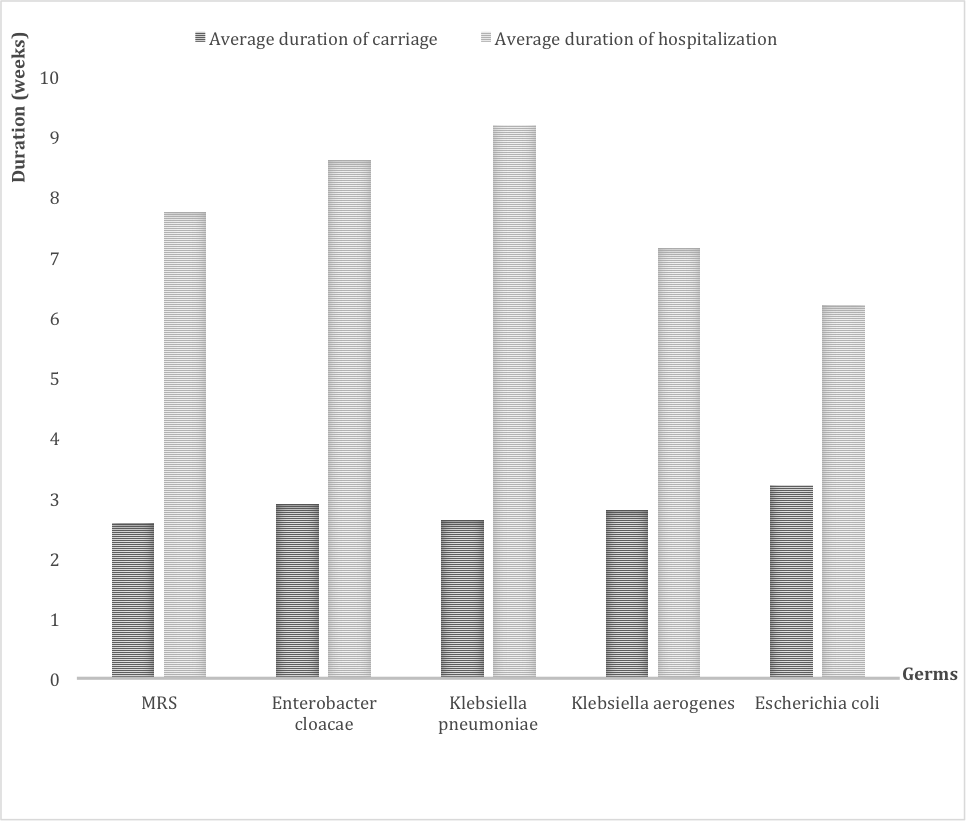Neonatology
Session: Neonatal-Perinatal Health Care Delivery: Practices and Procedures 2
460 - Multidrug-resistant strains and Bacillus cereus colonization in a neonatal intensive care unit: the NEOBIOTA study.
Monday, May 6, 2024
9:30 AM - 11:30 AM ET
Poster Number: 460
Publication Number: 460.3228
Publication Number: 460.3228

Marie-Alix Camphuis, MD (she/her/hers)
Fellow
Hospices Civils de Lyon
Lyon, Rhone-Alpes, France
Presenting Author(s)
Background: Multidrug-resistant strains (MRS) and Bacillus cereus (BC) can cause severe infections. Identification of these bacteria in stools of hospitalized infants helps to prevent cross-transmission by implementing specific infection control measures. These measures represent significant constraint for healthcare professionals, for parents, and a financial burden.
Objective: The primary objective of our study was to evaluate the presence of MRS and BC in stools of hospitalized infants. The secondary objectives were to evaluate the duration of carriage of these pathogens in stools, and evaluate the association between this digestive carriage and the occurrence of late-onset sepsis (LOS) related to these pathogens.
Design/Methods: It was a retrospective, monocentric study carried out in the tertiary care neonatal unit of a university hospital. According to our unit protocol, rectal swab was weekly collected between birth and discharge. We analyzed results of stool cultures in all hospitalized infants between January 2018 to September 2020. Information regarding characteristics of infants and confirmed LOS was collected.
Results: 5948 samples in 1,417 infants were analyzed. At birth, mean gestational age was 33(23-42)weeks and body weight was 2015(450-4720)g. 223 infants (16%) carried MRS and/or BC in stools. Most of them (75%) carried a MRS, 20% carried BC, and 5% carried both. The most frequent MRS was Enterobacter cloacae (47%), then Escherichia coli (12%). The duration of carriage of these microorganisms was 2.6±2.4weeks and varied according to the strains. The duration of carriage was longer for E. coli (3.2±3weeks) than other MRS. The vast majority of infants carrier of BC had a single, isolated carriage (86%). There was no LOS related to BC in infants with BC in the stool, while there were 7.3% (13/178) of infants with MRS. These 13 patients were extreme preterm infants born at a GA of 26.1±1SA [24.8; 28.5]. More than half of the infections (7/13, 53.8%) were due to E. cloacae. The percentage of infants carrying E. cloacae who had an infection was 8%, compared to 8% for E. coli, and 5% for Klebsiella pneumoniae. This percentage was higher for Pseudomonas aeruginosa (2/8, 25%) and for Stenotrophomonas maltophilia (1/2, 50%). We observed four cases of necrotizing enterocolitis in infants carrying E. cloacae in stools.
Conclusion(s): In our population one infant out of six carried MRS or BC in stools. The duration of carriage was longer for MRS than for BC carriage, which can help to adapt the duration of control measures. Carriage of MRS was more frequently associated to LOS than BC carriage.

